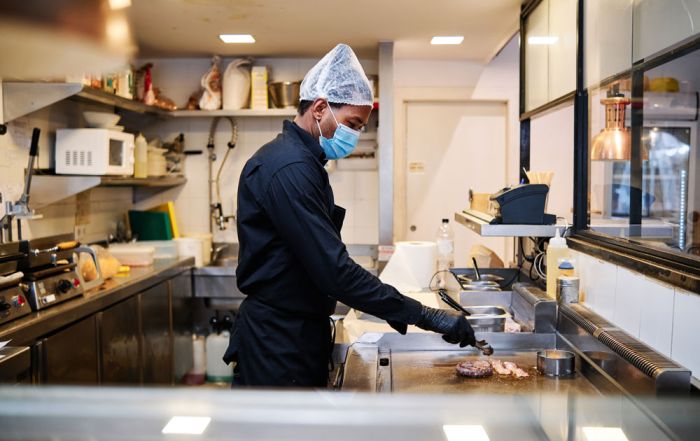Beyond Simple Compliance: Nurturing a Food Safety Culture in Your Team
In writing my last blog post, I was torn on addressing the issue of getting ready for a health inspection. I was torn, not because it isn’t an important topic, but because I didn’t want the reader who just stumbled upon the post and has not followed the FoodHandler blog previously to think I was promoting a reactive food safety program – one where we just get ready for the health inspection a month out from when we think that inspection might occur and forget about food safety the rest of the year. Deep down, I believe that food safety in retail foodservice establishments should be a proactive system, a system where we have developed a food safety culture among our team members.
Establishing a robust food safety culture within your establishment is essential for ensuring the health and well-being of your customers, maintaining regulatory compliance, and safeguarding the reputation of your operation. A food safety culture encompasses the shared values, beliefs, and behaviors that prioritize safe food handling practices at all levels of the organization. When we work with schools, we often talk about how the school system’s superintendent must buy into the food safety program, not just those managers and employees in the kitchen. In the restaurant setting, this means everyone from the general manager to bus persons.
A strong food safety culture begins with a visible commitment from leadership. What visibility means for your operation depends on the operation. Remember, it starts at the top and employees take their cues from the leaders. At the very least, we always say if you are a general manager and you want to promote food safety, but when you enter the kitchen and don’t wash your hands, what message does this send to your employees? When managers actively demonstrate their dedication to food safety, it sets a standard for the entire team. This also includes allocating resources for training, implementing comprehensive food safety policies, and fostering an environment where safety is prioritized above all else.
Investing in regular and thorough training is vital to food safety program success. Training ensures that staff members have the knowledge and skills to uphold food safety standards. Food safety training alone does not change on-the-job behaviors, but if you want employees to work toward changing behaviors, they must know the basics. Training should cover essential topics such as proper handwashing techniques, safe food storage practices, temperature control, and recognizing signs of foodborne illnesses. Understanding that knowledge alone isn’t sufficient; translating that knowledge into safe practices is key.
Food safety should not be viewed as a standalone requirement but as an integral component of your establishment’s core values.
Encouraging transparent and open communication allows employees to voice concerns, report potential hazards, and suggest improvements without fear of retribution. Regular meetings, feedback sessions, and anonymous reporting mechanisms can help in identifying and addressing issues before they escalate. This two-way communication fosters trust and reinforces the importance of collective responsibility in maintaining food safety.
Empowering employees to take ownership of food safety practices instills a sense of responsibility and pride in their work. Recognizing and rewarding safe behaviors can motivate staff and reinforce positive actions. Conversely, holding individuals accountable for lapses ensures that everyone understands the seriousness of food safety and the potential consequences of negligence.
Food safety should not be viewed as a standalone requirement but as a vital component of your business. By aligning food safety efforts with overall company objectives, you create a unified approach where every team member understands their role in maintaining these high standards. This alignment ensures that food safety becomes a natural and consistent part of daily operations.
Incorporating these strategies into the daily operation of your establishment can lead to a sustainable and effective food safety culture. In the end, remember that food safety is not a reactive program. A proactive approach helps mitigate risks and enhance the organization’s overall safety culture. Risk Nothing.
READ MORE POSTS
Don’t Underestimate the Importance of Employee Health as we head into the Winter Months
Early this month, I ran across an article discussing an outbreak investigation in the Australian Capital Territory. The outbreak caused more than 200 people to fall ill and was one of the most widespread outbreak investigations in the history of the territory. The cause was traced back to Norovirus, a virus I am sure you have heard us opine about in this blog before.
Exclusion and Restrictions: Understanding Employee Health and the Food Code
I received a call earlier in the month from a foodservice operator who suspected that one of their employees may have fallen ill and wondered if they had to send the employee home for the day. Once I started to ask a few more questions, it became obvious that the operator wasn’t really in-tune with the food code requirements on restrictions or exclusions for employees who may not be feeling well. Given that most operations are dealing with staff shortages currently and the fact that we are about to head into the fall and winter – when we tend to see an increase in upper respiratory and other illnesses, such as the flu - it seemed like a very timely and important topic for the blog this month.
Cross Contamination and the Surfaces that go Unnoticed
In October, I ran across a new research study published in the Journal of Food Protection in early-September. The article explored cross contamination in consumer kitchens during meal preparation. One of the authors was a previous SafeBites presenter, Dr. Ellen Shumaker, at North Carolina State University. Although the setting was consumer kitchens and not the commercial kitchen many of you deal with daily, the findings were very applicable to what we often see in the foodservice setting.
Emergency Preparedness: The Not-so Calm After the Storm
If you and your foodservice operation have been hit by an emergency or other disaster, what comes next and how do you move forward? Much of the answer to this is predicated on the actual disaster that you are dealing with – a flood is certainly a much different than a fire, but some of the food safety considerations remain the same if your business has been left intact and has not been damaged by the disaster.










